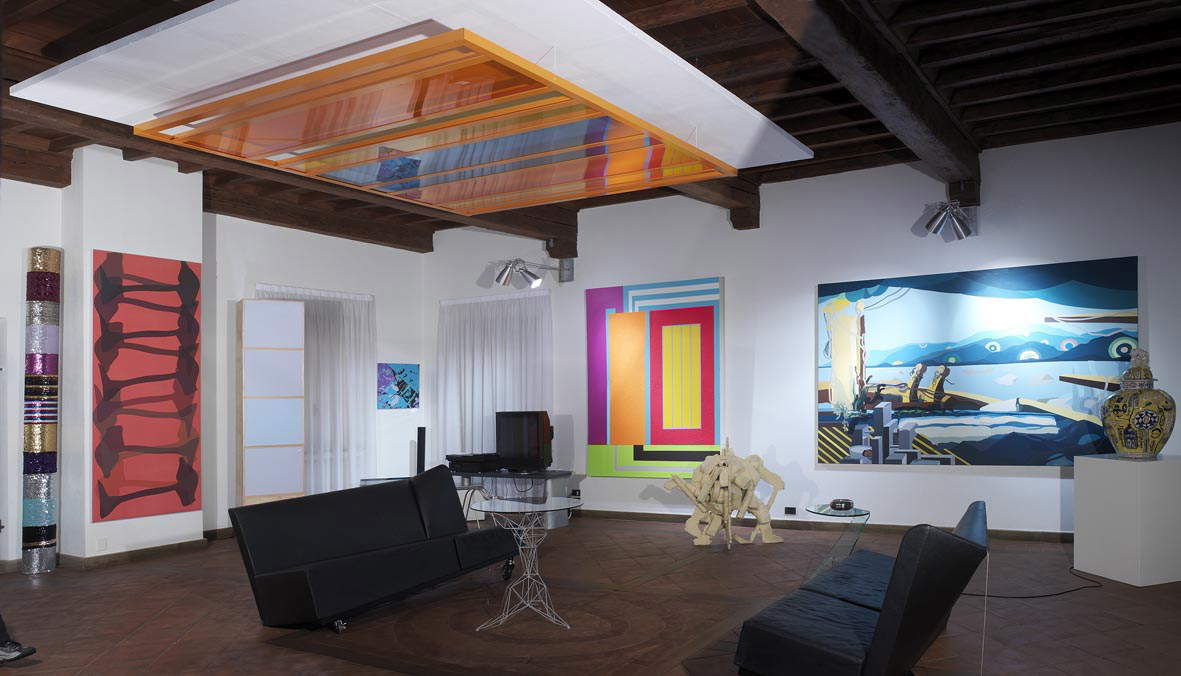First of all, I think it is appropriate to make a premise: my intervention, as I am a collector of contemporary art, can only be limited to this branch of collecting, being completely lacking in knowledge regarding collecting ancient art.
Drawing on my personal experience, I will try to give some pointers for those who intend to start collecting by drawing up a kind of decalogue,which does not pretend to be exhaustive nor the bearer of absolute truths, which I am going to quote below:
1)Consult the most accredited specialized magazines, both printed and “online,” including foreign ones such as Artforum and Frieze, not disdaining to dwell also on advertisements, from which not infrequently, interesting data are obtained;
2) Educate the eye by visiting the most authoritative museums,galleries and Fairs;
3) Count to a hundred (in the sense of avoiding getting carried away by enthusiasm in front of a work just seen by an author about whom we know nothing) before deciding on a purchase; ask the gallery, when it is the work of an artist whom one does not know or knows little about, for the author’s curriculum vitae, avoiding buying works by artists who have not yet had solo exhibitions or who have not at least participated in group exhibitions in public spaces or in authoritative galleries; in fact, in these cases the risk of making a mistake and buying a work by an artist who will always remain a nobody is very high, and the ambition of a collector, in my personal opinion, should be to acquire works by artists who will not disappear;
4) Avoid buying from unknown galleries by giving preference to artists, even young ones, who are part of the stable of prestigious galleries: the support of a gallery with a good reputation among insiders is an almost indispensable springboard for an artist to achieve success;in fact, skill alone is not enough to determine it;
5) Exchanging one’s views and information with other collectors; in this regard it may prove useful to join an association of collectors (I, for example, am a member of “Collective” which, incidentally, is about to launch a new prize for young artists in collaboration with the Castello di Rivoli, which will acquire the victor work in its collection) so as to confront a large number of competent individuals who nurture the same passion;

6) Avoid following fashionable phenomena because there is a rather high risk of speculative bubbles and that certain sudden and abrupt rises in quotations (often fueled by adjudications to out-of-market values at auctions) will collapse in the same short span of time in which they had risen to outrageous heights;
7) Privileging artists (who are not necessarily those whose quotations are highest) who enjoy, even if young and not yet fully established, a good reputation among critics and curators “who matter.”
8) Be wary of information provided by generalist television stations and the non-specialized press that is often misleading and unreliable;
9) Avoid buying a work with the intention of reselling it as soon as its value has increased; I do not intend to demonize those who occasionally resell the works that are part of their collection in order to buy others that they consider better or to procure money to increase the collection numerically, but I refuse to consider those who buy with merely speculative intent as collectors,but rather entrepreneurs;
10) Finally, the last element, which, unfortunately, is not acquired only with experience and money, but is above all, I believe, something innate: the so-called flair, what I call the “sixth sense,” which makes the good collector guess when a work is really important and one should in no way let it slip away.
Drawing conclusions, the success of a collection depends on a mix of two seemingly antithetical factors: instinct and rationality; as in a self-respecting cocktail, the balance achieved between the various ingredients determines the quality of the final result, and only those who find the right balance between passion and reasoning will succeed in becoming a good collector.
This contribution was originally published in No. 15 of our printmagazine Finestre Sull’Arte Magazine.Click here to subscribe.
Warning: the translation into English of the original Italian article was created using automatic tools. We undertake to review all articles, but we do not guarantee the total absence of inaccuracies in the translation due to the program. You can find the original by clicking on the ITA button. If you find any mistake,please contact us.